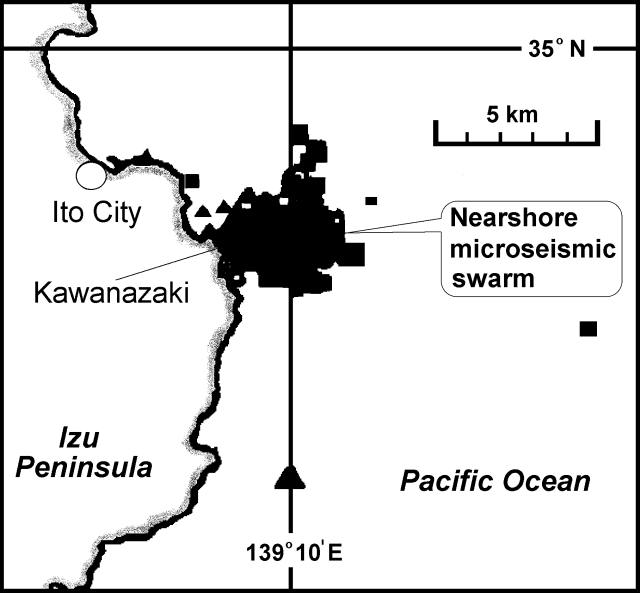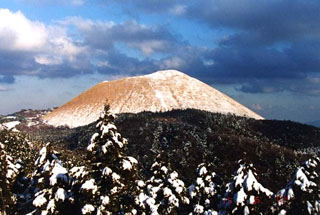Report on Izu-Tobu (Japan) — August 1995
Bulletin of the Global Volcanism Network, vol. 20, no. 8 (August 1995)
Managing Editor: Richard Wunderman.
Izu-Tobu (Japan) Earthquake swarm offshore SE of Ito City
Please cite this report as:
Global Volcanism Program, 1995. Report on Izu-Tobu (Japan) (Wunderman, R., ed.). Bulletin of the Global Volcanism Network, 20:8. Smithsonian Institution. https://doi.org/10.5479/si.GVP.BGVN199508-283010
Izu-Tobu
Japan
34.9°N, 139.098°E; summit elev. 1406 m
All times are local (unless otherwise noted)
An offshore micro-earthquake swarm began around 0700 on 11 September near Kawanazaki (figure 14). The number of events increased from 61 on 11 September to 125 the next day before decreasing to only 12 on 13 September. The largest event was M 2.6 at 1059 on the 12th. Volume strain meters detected contraction of 10-7. The last earthquake swarm was detected between 27 February and 9 March 1994; it consisted of 287 events, including a M 3.8 earthquake.
 |
Figure 14. Epicenter map of events at Izu-Tobu during 11-13 September 1995. Different symbols indicate hypocenter depths: circles, 0-5 km; triangles, 5-10 km; squares, 10-15 km. Courtesy of JMA. |
Geological Summary. The Izu-Tobu volcano group (Higashi-Izu volcano group) is scattered over a broad, plateau-like area of more than 400 km2 on the E side of the Izu Peninsula. Construction of several stratovolcanoes continued throughout much of the Pleistocene and overlapped with growth of smaller monogenetic volcanoes beginning about 300,000 years ago. About 70 subaerial monogenetic volcanoes formed during the last 140,000 years, and chemically similar submarine cones are located offshore. These volcanoes are located on a basement of late-Tertiary volcanic rocks and related sediments and on the flanks of three Quaternary stratovolcanoes: Amagi, Tenshi, and Usami. Some eruptive vents are controlled by fissure systems trending NW-SE or NE-SW. Thirteen eruptive episodes have been documented during the past 32,000 years. Kawagodaira maar produced pyroclastic flows during the largest Holocene eruption about 3,000 years ago. The latest eruption occurred in 1989, when a small submarine crater was formed NE of Ito City.
Information Contacts: Volcanological Division, Seismological and Volcanological Department, Japan Meteorological Agency (JMA), 1-3-4 Ote-machi, Chiyoda-ku, Tokyo 100 Japan.

